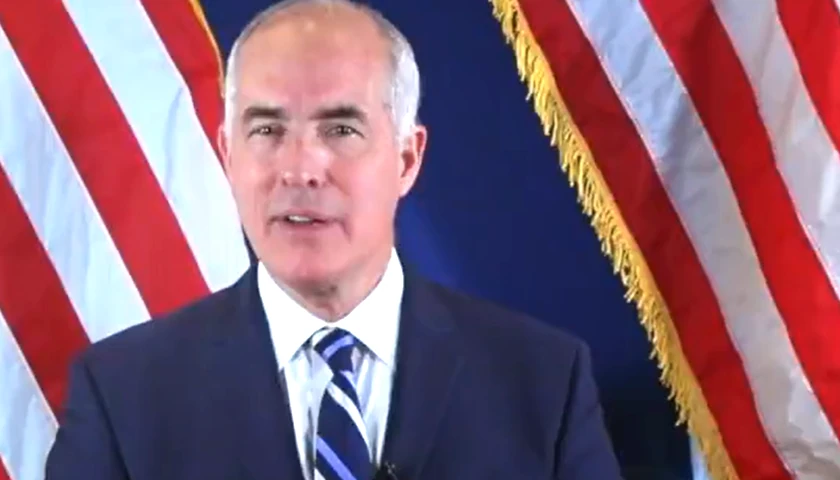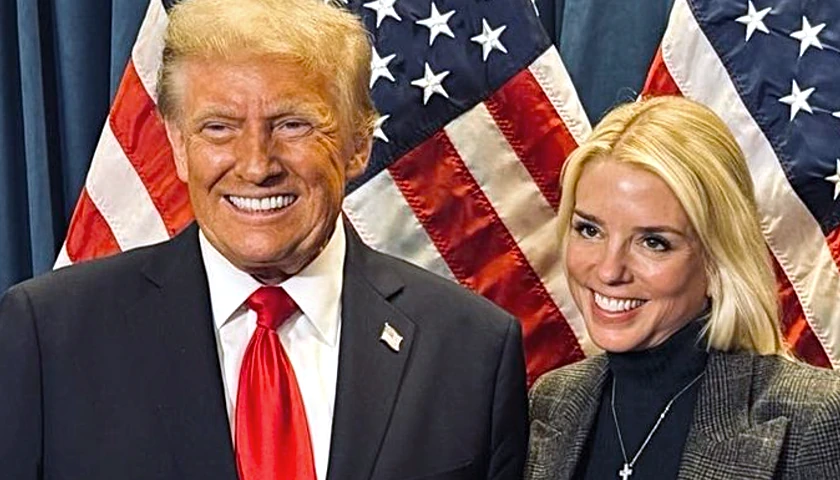By Robert Romano
In March, the Securities and Exchange Commission (SEC) proposed a new transaction fee pilot that would “subject stock exchange transaction fee pricing, including ‘maker-taker’ fee-and-rebate pricing models, to new temporary pricing restrictions across three test groups, and require the exchanges to prepare and publicly post data,” according to the agency’s website.
The idea is to see what distortions these fees and rebates have on “best execution” of orders to buy and sell stocks.
For example, an excess of rebates might lead to investors’ orders waiting on longer lines for execution, allowing high frequency traders to game the system, see those orders incoming and beat them to the punch.
In 2014, 60 Minutes interviewed “Flash Boys” author Michael Lewis, who described this type of “front-running” of investors, saying, “Means they’re able to identify your desire to, to buy shares in Microsoft and buy ’em in front of you and sell ’em back to you at a higher price. It all happens in infinitesimally small periods of time. There’s speed advantage that the faster traders have is milliseconds, some of it is fractions of milliseconds. But it’s enough for them to identify what you’re gonna do and do it before you do it at your expense.”
Think of it like a conveyor belt for pickpockets, stealing fractions of pennies at a time, but millions or billions of times every day. That is the market Lewis is describing. And now, it appears that the SEC is starting to at least regulate some of the incentives that high frequency traders are currently exploiting.
According to the agency announcement in March, the pilot will include “test group that would prohibit rebates and linked pricing, as well as test groups that would impose caps of $0.0015 and $0.0005 for removing or providing displayed liquidity. The pilot would apply to all NMS stocks of any market capitalization and would include all equities exchanges, including ‘taker-maker’ exchanges. The pilot would last for up to two years with an automatic sunset at one year unless the Commission extends the pilot.”
The pilot overall would address allegations that given the price incentives in place, brokers have been routing orders to exchanges that pay the most instead of filling them the fastest at the best price.
The implications could be tremendous for small-time investors and pensioners, including large public employee and private multiemployer pension plans that have been increasingly under stress the past decade, who could be seeing prices move away from them during day-to-day market operations.
Exchanges pay rebates for limit orders placed on exchanges, however those rebates tend to be kept by the broker. Meaning, if a broker is paid by both the investor and the exchange there could be a conflict of interest. Will the broker do what’s best for the client and route the transaction as quickly as possible, or will the broker seek the additional payment from an exchange?
The types of price distortions brought on by high frequency trading and “front-running,” some of which are being implicated by the proposed pilot, seem to conflict with the traditional rationale of monthly contributions and the long-term “buy and hold” strategy to retirement planning.
This all raises interesting questions. How much of daily volumes are taken up by traders simply beating buy and sell orders to the punch? Would equities perform differently or better if it weren’t for these shenanigans? Will restricting the fees and rebates really stop or reduce “front-running”?
Moreover, how much of this behavior is ultimately owed to the government-created monopolies that the New York Stock Exchange, NASDAQ and others entail? Readers should not confuse these advantages that exchanges provide to high frequency traders as free markets at work. These are already highly regulated entities that are themselves self-regulatory organizations with a duty to provide efficient markets and prevent manipulation.
And it is the regulations already in place that have permitted the current trading environment that appears to be bleeding small-time investors and pensioners’ retirement savings.
But it may be starting to change. Under the Trump administration, it appears the agency is finally taking a more pro-investor stance.
When the NYSE proposed major increases in the fees to do with market data, the Trump administration and the SEC blocked it. Usually these fee hikes are just rubber-stamped by the agency.
That came after an Oct. 2017, the U.S. Treasury report entitled “A Financial System That Creates Economic Opportunities” that stated, “Treasury recommends that the SEC also recognize that markets for SIP [Securities Information Processor] and proprietary data feeds are not fully competitive. The SEC has the authority under the Exchange Act to determine whether the fees charged by an exclusive processor for market information are ‘fair and reasonable,’ ‘not unreasonably discriminatory,’ and an ‘equitable allocation’ of reasonable fees among persons who use the data. The SEC should consider these factors when determining whether to approve SRO [Self-Regulatory Organization] rule changes that set data fees.”
Ultimately, public trading of stocks, as regulated by Congress and the SEC depends on real price discovery. That when you place an order, it can fulfill at the price the trader expected. The government-created monopolies we are dealing with constrain market competition, enabling systemic “front-running” in trading.
Even if you believed all this should be run by free markets, that is really not the system that is in place today. Instead it is one where the very big firms benefit greatly from the complex scheme of regulations. It’s a case where the only apparent options appear to be regulation by SEC that tips the balance towards investor interests or those who profit off of volume.
The Trump administration and the SEC should be applauded for moving in this direction. It’s about time markets worked for American investors and pensioners — instead of robbing them blind.
– – –
Robert Romano is the Vice President of Public Policy at Americans for Limited Government.




